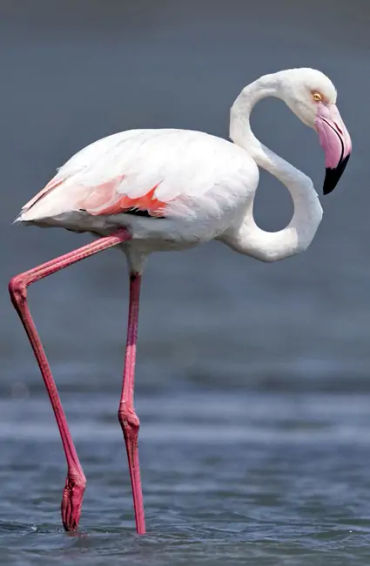
Fun Fact! Flamingoes bend their legs at ankles not knees.
Flamingos are fascinating birds that bend their legs at the ankle rather than the knee. They basically stand on tiptoe. Their knees are covered in feathers and are closer to the body. This distinguishes them from other migratory birds.


